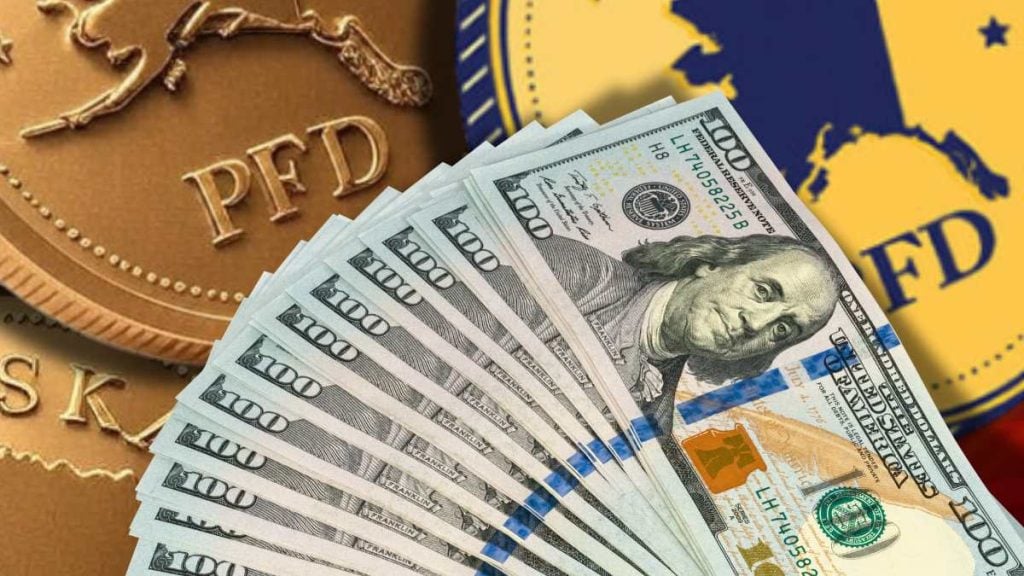In December 2024, Governor Mike Dunleavy proposed a full dividend of $3,892 per person, which would represent the highest payment in years. However, this figure would result in a multi-billion-dollar deficit, according to official budget estimates.
Faced with this situation, the Legislature has begun debating possible cuts. The House has already voted to reduce the payment to $1,400, while the Senate has proposed an even lower option: $1,000 per person. However, it remains unclear what eligible citizens will receive.
The Permanent Fund Dividend: What we know so far about stimulus payments
Dunleavy advocates using the constitutional reserve account to keep the dividend high. Opposition lawmakers argue that depleting those savings would worsen the fiscal crisis. Alaska faces a deficit of more than $600 million in 2025-2026,, due to lower oil revenues.
The debate highlights strong tensions: some want to prioritize payments to citizens, as hundreds of thousands await that money, while others seek to preserve state funds. While the executive branch insists on its proposal, the Senate seeks alternatives without touching reserves. The final solution will depend on negotiations before the close of the legislative session in the spring.
Dates and application process for the 2025 PFD stimulus check
The application period for the 2025 PFD opened on January 1, 2025, and closed on March 31, according to pfd.alaska.gov. Online applications are managed through the myAlaska portal, while physical applications must be mailed with a valid postmark by the deadline.
Historically, payments are made in October. In 2024, deposits began on October 3, followed by postal checks on October 26. For 2025, a similar schedule is anticipated, although without the $298 energy supplement granted in 2024
To receive the 2025 PFD, applicants must be Alaska residents for all of 2024 and not claim benefits in other states. Permitted absences cannot exceed 180 days per year, except for exceptional reasons such as school or military service, according to the official website.
A minimum of 72 consecutive hours of physical presence in Alaska during 2023 or 2024 is also required. Those who were incarcerated for serious crimes in 2024 are not eligible, according to state rules.
Guardians must submit separate applications for dependent minors. Verification of documents, such as birth certificates, may be required after the initial application.
How to apply: the faster way to get the cash
The fastest way to apply is through myAlaska, where the form is signed electronically. Those who prefer paper should ensure the submission is postmarked by March 31, 2025.
The PFD Division recommends direct deposit for expedited payment. Those who opt for checks should update their mailing address. Delays in supporting documentation may affect approval.
In 2024, 93% of applications were submitted online, making the process extremely expeditious and simple. For 2025, the same channels will be maintained, without introducing new platforms or technological requirements.
Brief history of the PFD program
The PFD was established in 1976 by a constitutional amendment to distribute oil revenues. The first payment, in 1982, was $1,000 per adult, later adjusted based on residency criteria and the profitability of the Permanent Fund.
In 2016, a citizen referendum established the formula based on 50% of the fund’s five-year average profit. However, legislative adjustments have varied the amounts: from $2,072 in 2015 to $1,312 in 2023, reflecting the volatility of oil revenues.
The all-time high of $3,284 in 2022 was the result of exceptional profits from the fund. However, the lack of political consensus has prevented sustained high payouts. The 2024 PFD totaled $1,702, including a one-time energy supplement. For 2025, the discussion focuses on reducing the amount in light of the fiscal deficit and low oil prices.
For 2025, Governor Dunleavy proposes $3,892 from the reserves, but lawmakers reject this amount. The House of Representatives recommends $1,400, while the Alaska Senate believes the check should be $1,000. Payment dates are expected to be set for September or October 2025.
